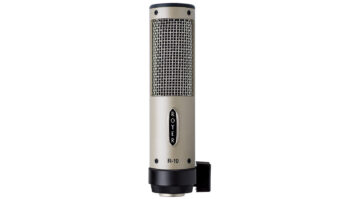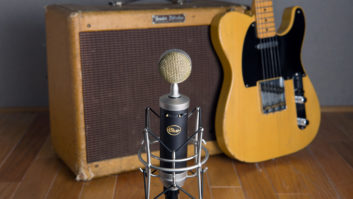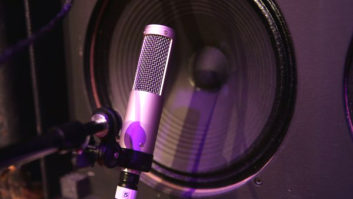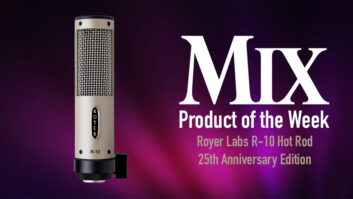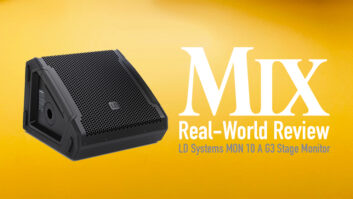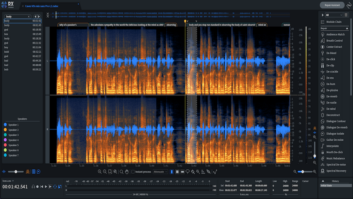
This article originally appeared in the December 2018 issue of Pro Sound News. Innovations is a monthly column in which different pro audio manufacturers are invited to discuss the thought process behind creating their products of note.
It was more than 20 years ago that Royer Labs set out on a simple mission. Our goal was to bring the ribbon microphone from obscurity back to prominence by incorporating new technologies and broadening the application possibilities of this venerable classic.
We were determined to build products of the highest quality and provide superlative customer service. We developed a new transducer design (introducing our patented offset ribbon and our direct ribbon corrugating method) and utilized neodymium magnet materials and toroidal transformers to improve overall performance.
The result was the first compact high-SPL ribbon studio microphone, the R-121, and the ultra-compact SF-12 stereo microphone. Both products were a success and the company flourished. The R-121 is now ubiquitous in studios around the world and continues to be a flagship product for us.
Over the years, we continued to innovate by introducing the world’s first phantom-powered ribbon microphone and the first vacuum tube ribbon microphones. More recently, we have broadened our scope to include shockmounts that have done away with elastic materials altogether, enabling the product to be serviceable for a lifetime without maintenance or degradation. We were awarded a patent for this development.
Our line of products continued to grow, resulting in a series of microphones designed for a wide variety of applications. In 2013, Royer Labs was awarded a prestigious Technical Grammy Award for our contribution to the advancement of the recording field and making the ribbon microphone relevant again. In their award statement, the Recording Academy noted that our ribbon microphones brought an analog sound, feel and musicality back to the recording process that had been lost when tape machines were replaced by digital recording devices.
Our company enjoyed unencumbered growth for many years and has become a highly respected brand. Along with that coveted reputation, Royer also became known as a company that manufactured only handcrafted, high-end and expensive products.
That’s where things got interesting for us. In the beginning, there was little competition and our core buyer was your typical professional studio that had no problem purchasing topflight gear. About 10 years ago, things started to change—and quickly. Pro studios started disappearing and the ones that were left were no longer freewheeling with their purchases. We also started to see a shift in industry demographics. Large studios started to give way to the home studio, and artists were relying more on live performances than record sales for their income.
Simultaneously, as the ribbon microphone market matured, competition started to come from everywhere. Major manufacturers—and especially companies from China—started offering ribbon microphones. A slew of inexpensive, cheaply made offshore mics started to proliferate in this emerging market. A cottage industry developed that included do-it-yourselfers and mic modifiers who improved some of the cheaper offerings.
As this dynamic emerged, we started hearing things like, “I would love to own a Royer, but they are simply out of reach for me.”
We decided to apply our skills, experience and leadership position to create products specifically for this new market. We were determined to produce a product that met our high standards, but that was more affordable considering the market conditions.
The first thing we did was identify the type of customer we needed to satisfy. Then we examined the type of applications this mic would need to excel at—everything from home and professional recording and live stage performance to loud guitars and vocals. Lastly, we had to determine a target price.
In the design phase, we addressed the requirement for a high SPL. This led to the development of a large transducer cavity with a triple-baffle windscreen. The transducer was isolated on silicone buffers for high shock resistance.
Electrically, we designed a special impedance-matching transformer with a slightly lower turns ratio than our R-121, which gave the new design a very high overload threshold, while minimizing the likelihood of overdriving the intended preamplifier. To be able to meet our target price, we relied on an offshore contractor to machine the parts for us and incorporated a powder-coated finish instead of our usual and expensive electroless nickel finish.
We created numerous prototypes and beta-tested myriad ideas. Finally, after almost two years of R&D, we had a design we felt would be the perfect fit for this new market—and it was still every bit a handcrafted Royer product. The R-10 was born.
The new ribbon mic was readily accepted and, for the first six months, we had difficulty keeping ahead of orders. Our meticulous assembly procedures meant that some customers often had to wait several months to get stock. Sales have been brisk, but we finally have production running smoothly, with no delays. The R-10 has been well received and we are proud of our achievement.
In retrospect, being open to changing market conditions instead of fearing them provided a rare opportunity for our company. Circumstance proved to be a great incentive for us and resulted in broadening our overall market position.
Rick Perrotta is president of Royer Labs.
Royer Labs • www.royerlabs.com
